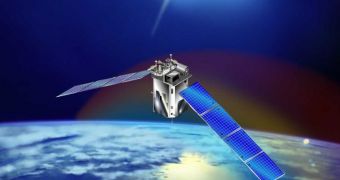At this point, we feel very fortunate when we narrowly escape the effects of solar storms, and the massive clouds of high-energy particles they aim at our planet. But, in the future, it may be that we could harness their power for electricity production.
Between March 8-10, the upper atmosphere protecting Earth from the effects of solar radiation received sufficient energy from solar flares and coronal mass ejections to power up the entire city of New York for than 2 years.
According to NASA Langley Research Center (LRC) expert Martin Mlynczak, our planet has not received this level of heat and energy in 7 years. The new events were the most significant since 2005, and showed another way in which the Sun can directly influence our planet.
Astrobiologists study these phenomena for a variety of purposes, including figuring out how the influences the Sun has on Earth make this planet habitable. Once enough data are collected, it may be possible to extrapolate them for extrasolar planets as well.
The new measurements were made using the Sounding of the Atmosphere using Broadband Emission Radiometry (SABER) instrument aboard the NASA Thermosphere Ionosphere Mesosphere Energetics and Dynamics (TIMED) satellite, Astrobiology Magazine reports.
This instrument was designed specifically to measure infrared emissions coming from carbon dioxide (CO2) and nitric oxide (NO) in Earth's upper atmosphere. Both these chemicals play a very important role in global warming and climate change.
“Carbon dioxide and nitric oxide are natural thermostats. When the upper atmosphere (or thermosphere) heats up, these molecules try as hard as they can to shed that heat back into space,” Hampton University expert and SABER principal investigator, James Russell, explains.
TIMED was used for the new study because solar physicists had detected the release of an X5-class solar flare on March 6. Two days later, the particle clouds it released slammed into Earth's atmosphere, producing spectacular auroras.
“The thermosphere lit up like a Christmas tree. It began to glow intensely at infrared wavelengths as the thermostat effect kicked in,” Russell says.
“Unfortunately, there’s no practical way to harness this kind of energy. It’s so diffuse and out of reach high above Earth’s surface. Plus, the majority of it has been sent back into space by the action of CO2 and NO,” Mlynczak explains.
However, in the future, it may be possible to develop new technologies able to harness this power source.

 14 DAY TRIAL //
14 DAY TRIAL //